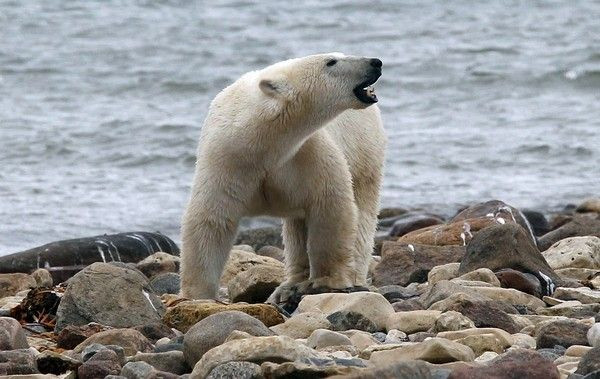Polar bears stand a chance

There's hope for polar bears, but it depends on human behavior.
According to a study published in this week's journal Nature, scientists from the U.S. Geological Survey, the National Science Foundation and the University of Washington have found that if humans reduce greenhouse gas emissions significantly in the next decade or two, enough Arctic ice is likely to remain intact during late summer and early autumn for polar bears to survive.
Polar bears were added to the threatened species list nearly three years ago when their icy habitat showed steady, precipitous decline because of a warming climate.
What we projected in 2007 was based solely on the business-as-usual greenhouse gas scenario, said Steven Amstrup, an emeritus researcher at the USGS and senior scientist at the Montana-based organization Polar Bears International. That was a pretty dire outlook, but it didn't consider the possibility of greenhouse gas mitigation.
The 2007 study projected that only about one-third of the world's 22,000 polar bears might be left by mid-century if dramatic Arctic ice decline continued, and that eventually polar bears could disappear completely. The work led to the 2008 listing of polar bears as a threatened species.
Our current research provides strong evidence that it's not too late to save polar bears from extinction, said Eric DeWeaver, an NSF atmospheric scientist and co-author of the study. Ultimately the outcome depends on how much greenhouse gas we add to the atmosphere in the future, not how much we've added until now.
Cecilia Bitz of the University of Washington called the study a very promising, hopeful message, but it's also an incentive for mitigating greenhouse emissions.
Greenhouse gases -- both those produced exclusively by industrial processes, like hydrofluorocarbons, perfluorocarbons and sulfur hexafluoride, and those occurring in nature which human activities increase, like nitrus oxide, methane and carbon dioxide - absorb and trap heat in the atmosphere. The increased heat of the greenhouse effect causes global warming.
Previous work by Bitz and others showed that unchecked temperature increases, along with natural environmental volatility, could result in the loss of vast areas of Arctic ice in less than a decade.
It also showed that with continued business-as-usual greenhouse gas emissions, the ice did not recover and largely disappeared altogether in following decades.
Polar bears depend on sea ice for access to ringed and bearded seals, their primary food source. During seasons when they can't reach ice, the bears mostly go without food and can lose about two pounds a day.
The periods when they don't have ice access have increased, and are expected to continue to do so with the current level of greenhouse gas emissions.
The new study indicates that if greenhouse gas emissions were reduced substantially in the near future, rapid ice losses would be followed by substantial retention of the remaining ice through this century, and partial recovery of the ice that disappeared during the rapid ice loss.
Increased retention of sea-ice habitat because of greenhouse gas mitigation would allow polar bears to survive in greater numbers throughout this century, and in more areas of the Arctic, than would happen with no mitigation.
© Copyright IBTimes 2024. All rights reserved.




















